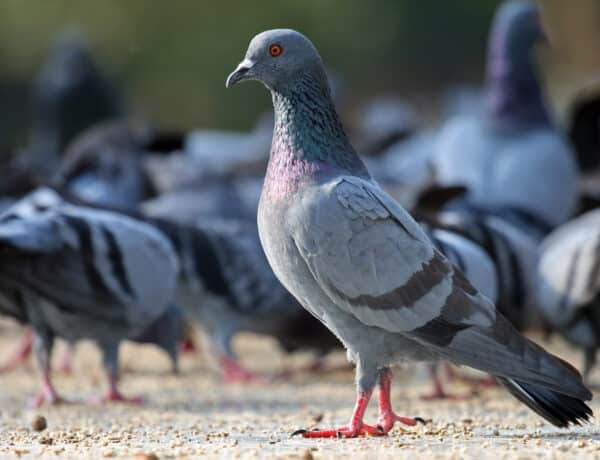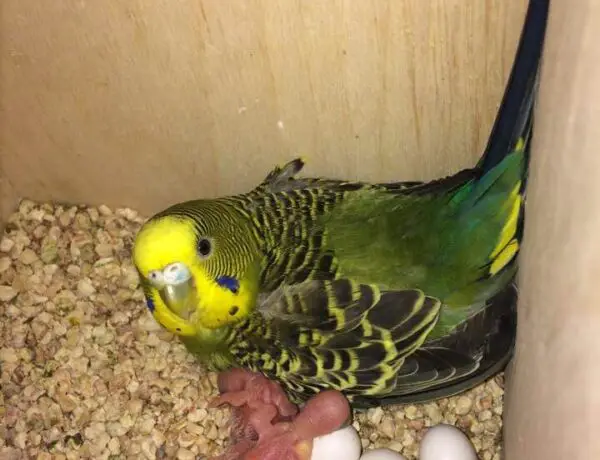Introduction
Are Pigeons Protected: In the midst of bustling cities and tranquil parks, pigeons gracefully navigate the urban landscape, their cooing calls echoing through the streets. These seemingly ordinary birds, often referred to as “rats of the sky,” have a unique place in the world of wildlife and human interaction. As we contemplate the coexistence of pigeons with urban life, a pressing question arises: Are pigeons protected by laws and regulations, or are they left to fend for themselves amidst the concrete jungles of our cities?
This inquiry into the protection of pigeons opens a window into the intricate relationship between humans and these feathered inhabitants of our urban environments. Pigeons have carved out a niche for themselves as both pests and beloved creatures, sparking debates about their rights, welfare, and the responsibilities we bear as stewards of the environment. In this exploration, we will delve into the complex web of legal frameworks, ethical considerations, and cultural attitudes that shape the fate of pigeons, shedding light on whether these resilient birds receive the protections they deserve.
From the bustling streets of New York City to the serene plazas of Venice, pigeons are a constant presence, inviting us to ponder the delicate balance between wildlife conservation and the realities of city life. Join us on a journey to unravel the multifaceted story of pigeon hatch protection and to discover the challenges and controversies that surround these avian companions of our urban world.
Are pigeons protected in the USA?
Feral pigeons are not protected by federal law and most states do not afford them protection. State and local laws should be consulted, however, before any control measures are taken. Some cities are considered bird sanctuaries that provide protection to all species of birds.
Pigeons, specifically the rock pigeon (Columba livia), are not protected under federal law in the United States. The Migratory Bird Treaty Act (MBTA), which is one of the primary federal laws governing the protection of birds, primarily applies to native and migratory bird species. Rock pigeons are not native to North America and are considered introduced, non-native species.
As a result, rock pigeons do not receive the same level of protection under the MBTA as native and migratory birds. In many urban and suburban areas, they are often managed as pests due to their population size and potential nuisance behaviors, such as roosting on buildings and creating sanitation concerns.
However, the treatment of rock pigeons can vary by location, and some municipalities may have local ordinances or regulations related to their management. These regulations are typically aimed at addressing issues like feeding pigeons in public areas and implementing measures to deter roosting or nesting on buildings.
Is A pigeon an endangered species?
An endangered species of pigeon that was native to North America is the passenger pigeon or wild pigeon (Ectopistes migratorius). Passenger pigeons were hunted by Native Americans, but after the arrival of Europeans, especially in the 19th century, hunting increased.
Pigeons, specifically the rock pigeon (Columba livia), are not considered endangered species. In fact, rock pigeons are one of the most widespread and abundant bird species globally. They are highly adaptable birds that have successfully colonized urban environments around the world, earning them the nickname “city pigeons.”
Rock pigeons are not native to North America but were introduced by humans. In urban areas, they are often considered a common sight, and their populations are not threatened. In some cities, efforts may be made to manage their populations due to the nuisance they can cause, such as building damage and sanitation concerns.
Why pigeons are harmful?
Diseases associated with pigeon droppings include Cryptococcosis, Histoplasmosis and Psittacosis. You can become infected with these diseases by breathing in the dust that is created when cleaning droppings. The risk of pigeon-related diseases is rare.
Pigeons, often referred to as city pigeons or rock pigeons, are considered harmful in certain contexts due to several reasons:
Nuisance and Health Concerns: Pigeons can create nuisance problems in urban areas. Their droppings can accumulate on buildings, statues, sidewalks, and other structures, leading to aesthetic and hygiene issues. Pigeon droppings can contain bacteria, fungi, and parasites that may pose health risks to humans, particularly if the droppings are not cleaned regularly.
Damage to Buildings: Pigeons can cause damage to buildings and structures. Their droppings are acidic and can corrode surfaces over time, potentially leading to costly repairs. Pigeons may also nest in building structures, clogging drains and gutters, and causing additional damage.
Agricultural Concerns: In rural areas, pigeons can be considered pests for agriculture. Large flocks of pigeons can damage crops, including grains, fruits, and vegetables, leading to economic losses for farmers.
Competition with Native Species: In some cases, pigeons can outcompete native bird species for resources such as food and nesting sites. This competition can negatively impact local bird populations.
Invasive Potential: While rock pigeons are not native to North America, they have adapted well to urban environments and can become invasive in some areas, potentially displacing native species.
Spread of Disease: Pigeons, like other birds, can carry diseases that can be transmitted to humans. While the risk of disease transmission from pigeons to humans is generally low, close contact with pigeon droppings or nesting materials should be avoided to minimize the risk.
What birds are not protected in the USA?
Birds that are considered non-native species such as the House Sparrow and the European Starling are not protected, and many groups of hunted or game birds, including ducks, geese, doves, and many shorebirds are subject to limited protection and can be hunted in season.
In the United States, most native and migratory bird species are protected under federal laws like the Migratory Bird Treaty Act (MBTA) and state wildlife regulations. These laws make it illegal to harm, capture, or kill these birds without the appropriate permits or during specified hunting seasons. However, there are some exceptions, and certain bird species are not protected or have limited protection in specific circumstances. Here are a few examples:
House Sparrow (Passer domesticus): House sparrows are an introduced, non-native species in North America and are not protected under the MBTA. They are considered pests in some areas and may be subject to control measures.
European Starling (Sturnus vulgaris): Similar to house sparrows, European starlings are non-native and invasive birds in North America. They are not protected under the MBTA and can be managed as pests in certain situations.
Rock Pigeon (Columba livia): Rock pigeons, often referred to as city pigeons, are not protected under the MBTA. They are considered non-native and are often managed as urban pests.
Common Myna (Acridotheres tristis): Common mynas are non-native birds found in some parts of the United States, and they are not protected under the MBTA. They are subject to control efforts in areas where they have become invasive.
Invasive Species: Some non-native bird species that are considered invasive and harmful to native ecosystems may not be protected under federal laws and may even be subject to eradication efforts.
Are pigeons protected in California?
Feral pigeons are not protected by federal or state statute. Band-Tails are classified as a migratory game bird and you must obtain a permit from the California Department of Fish and Game before attempting to control them. The scaring or herding of Band-Tails can be done without a permit.
Yes, pigeons are generally protected in California under both federal and state laws. The primary federal law that provides protection to pigeons and other migratory birds in California is the Migratory Bird Treaty Act (MBTA). The MBTA prohibits the harming, capturing, or killing of migratory birds, including pigeons, without the appropriate permits issued by the U.S. Fish and Wildlife Service (USFWS). This protection covers pigeons and their nests, eggs, and feathers.
California also has state regulations related to wildlife protection. The California Department of Fish and Wildlife (CDFW) oversees wildlife conservation and management in the state. While pigeons are not typically considered game birds in California, they are still protected under state law.
If you have specific questions or concerns about pigeons and their legal status in California, it’s advisable to consult with local wildlife authorities or municipal authorities to understand any additional regulations or restrictions that may apply in your area.
Are birds protected in the US?
Only “native” migratory bird species are protected under the MBTA, and there are now 1,026 species covered by the Act, including common birds such as the American crow and 74 rare birds also on the Endangered Species list, such as the spectacled eider (Somateria fischeri.)
Yes, birds are protected in the United States through a combination of federal and state laws and regulations. The primary federal law governing the protection of birds in the U.S. is the Migratory Bird Treaty Act (MBTA). The MBTA was enacted in 1918 and is one of the most important pieces of bird conservation legislation in the country. It provides protection for a wide range of native and migratory bird species, their nests, eggs, and feathers.
Key points regarding the protection of birds in the U.S. include:
Migratory Bird Treaty Act (MBTA): The MBTA makes it illegal to harm, capture, or kill migratory birds without the appropriate permits. It covers over 1,000 species of birds, including songbirds, waterfowl, raptors, and many others. The law is aimed at conserving these species and preventing their decline.
Bald and Golden Eagle Protection Act: This act specifically protects bald eagles and golden eagles, as these iconic birds have faced significant threats to their populations. The act makes it illegal to harm, capture, or disturb these eagles, their nests, or eggs.
Endangered Species Act (ESA): While primarily focused on protecting endangered and threatened species, the ESA can also apply to certain bird species that are listed as endangered or threatened. This law provides comprehensive protection to prevent their extinction and promote their recovery.
State Laws: In addition to federal laws, individual states often have their own regulations governing the protection of birds, including hunting seasons, habitat conservation efforts, and specific protections for state-listed species.
Conservation Programs: Various federal and state programs are in place to conserve and restore critical bird habitats, such as wetlands, grasslands, and forests, to support healthy bird populations.
Are pigeons protected in Texas?
Pigeons are not protected in Texas and may be taken at any time; also, their nests and eggs may be destroyed.
Pigeon protection in Texas is primarily governed by federal regulations, particularly the Migratory Bird Treaty Act (MBTA), which provides protection to a wide range of migratory bird species, including pigeons, as well as their nests, eggs, and feathers. Therefore, it is generally illegal to harm, capture, or disturb pigeons and their nests without appropriate permits issued by the U.S. Fish and Wildlife Service (USFWS).
In urban areas, pigeons are often considered pests due to their population size and presence. Local municipalities in Texas may have ordinances or regulations related to pigeons, such as rules against feeding them in public places or requirements for maintaining property in a way that discourages pigeon roosting. These local regulations are not related to bird conservation but are more focused on managing pigeons as a nuisance in urban environments.
It’s advisable to consult with local wildlife authorities or municipal authorities in Texas to understand any specific regulations or restrictions related to pigeons in your area, as these can vary from one locality to another.
What is the bird law in the US?
The Migratory Bird Treaty Act (MBTA) prohibits the take (including killing, capturing, selling, trading, and transport) of protected migratory bird species without prior authorization by the Department of Interior U.S. Fish and Wildlife Service.
Bird law in the United States encompasses a wide range of federal and state regulations aimed at the conservation and protection of native and migratory bird species. The primary federal law governing the protection of birds in the U.S. is the Migratory Bird Treaty Act (MBTA), while individual states may have their own specific regulations and laws pertaining to bird conservation.
Here are some key aspects of bird law in the U.S.:
Migratory Bird Treaty Act (MBTA): Enacted in 1918, the MBTA is a federal law that protects migratory birds from unauthorized hunting, capture, or possession. It covers over 1,000 species of birds and their nests, eggs, and feathers. The MBTA makes it illegal to harm, harass, or take migratory birds without the appropriate permits.
Bald and Golden Eagle Protection Act: This act provides specific protection for bald and golden eagles, including strict prohibitions against killing, capturing, or disturbing these birds, their nests, or eggs.
Endangered Species Act (ESA): While primarily focused on protecting endangered and threatened species, the ESA can also apply to certain birds listed as endangered or threatened. This law provides comprehensive protection to prevent their extinction and promote their recovery.
State Laws: In addition to federal laws, individual states may have their own regulations governing the protection of birds, including hunting seasons, habitat conservation, and specific protections for state-listed species.
Hunting and Conservation Regulations: The U.S. Fish and Wildlife Service (USFWS) and state wildlife agencies establish hunting seasons and bag limits for game birds such as ducks, geese, and turkeys. These regulations are designed to ensure sustainable hunting practices.
Habitat Conservation: Various federal and state programs aim to conserve and restore critical bird habitats, such as wetlands and grasslands, to support healthy bird populations.
Permits: Permits are often required for activities that may impact birds, such as scientific research involving birds, rehabilitation of injured or orphaned birds, and activities near nesting sites.
Conclusion
The question of whether pigeons are protected reveals a complex interplay of legal regulations, cultural perceptions, and ethical considerations. While pigeons are not typically afforded the same level of legal protection as endangered or native species, their presence in our urban landscapes has sparked ongoing discussions about their welfare and the role of humans in their care.
Despite their often-overlooked status in the world of wildlife conservation, pigeons have found their place in the hearts of many city dwellers. Their adaptability and resilience have enabled them to thrive alongside humans, serving as both a source of fascination and, at times, contention. In response to the challenges pigeons face in urban environments, some individuals and organizations have taken it upon themselves to provide food, shelter, and even medical care to these birds.
As our cities continue to evolve, so too will the conversation surrounding pigeon protection. Balancing the needs of these birds with the demands of urban living is an ongoing endeavor, one that prompts us to reflect on our role as stewards of the environment and our responsibility to coexist with the diverse array of species that share our world.




No Comments